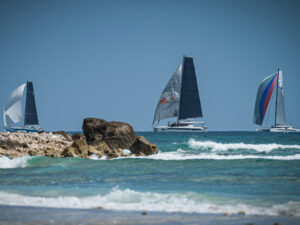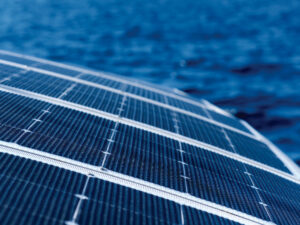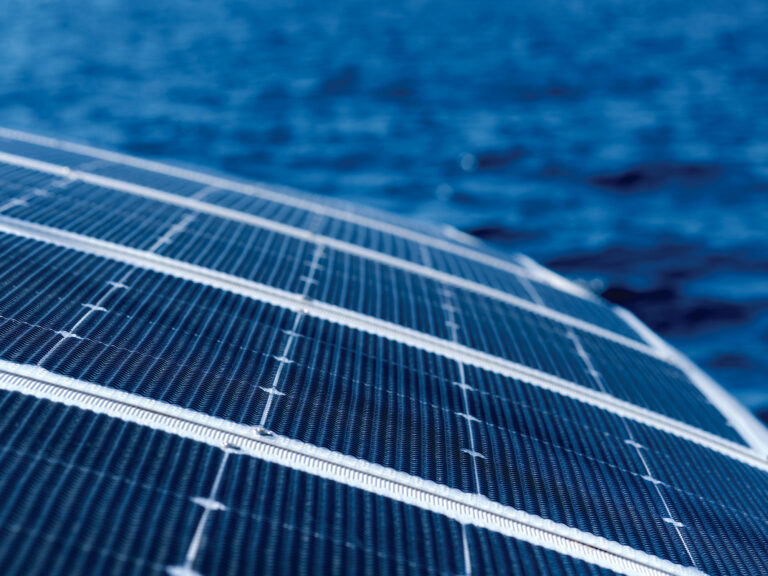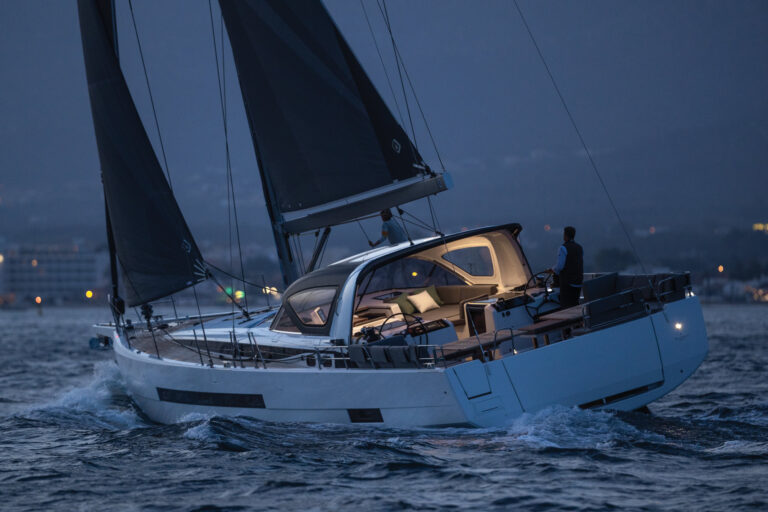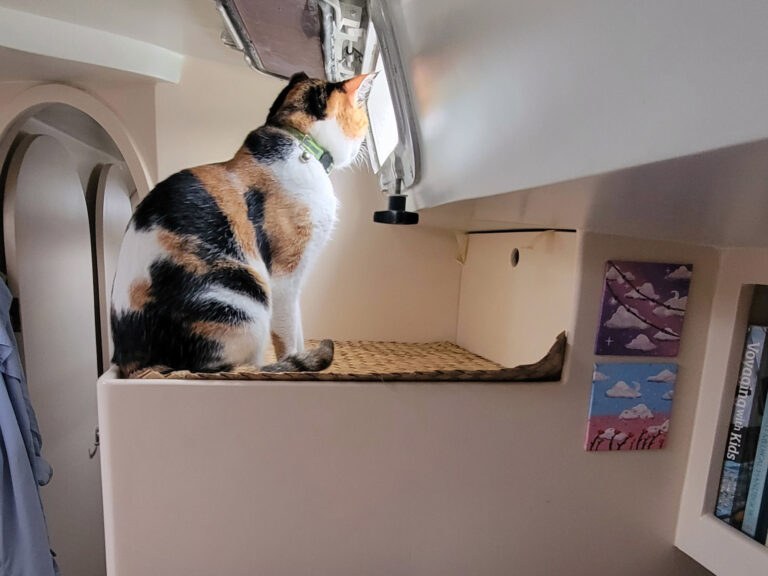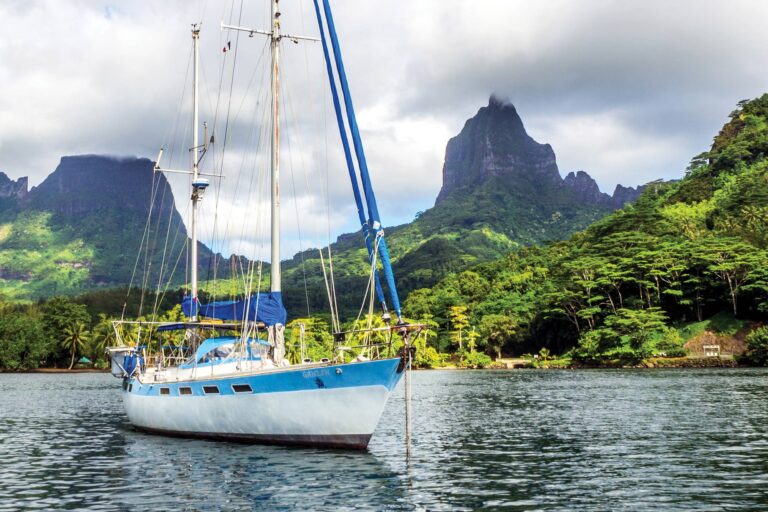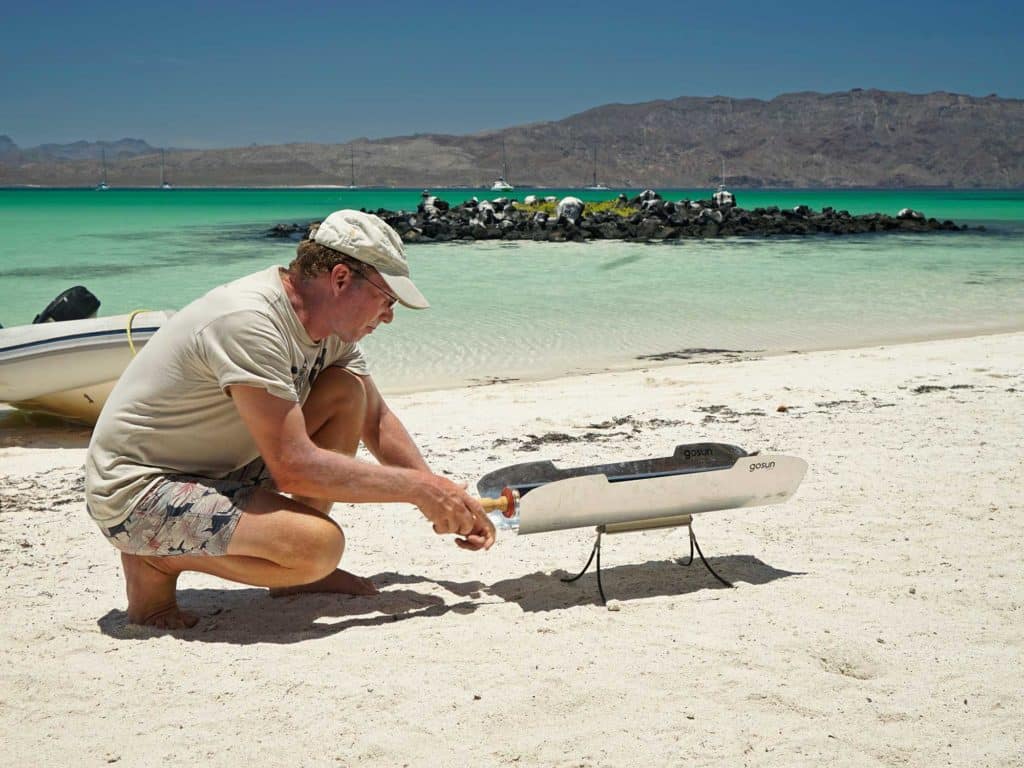
We ran out of propane last night. Inconveniently enough (is it ever convenient?) it happened in the middle of cooking dinner. That’s preferable to seeing burner flames fizzle out before morning coffee is finished brewing, however.
There was no crisis; a full second tank was waiting. Gauging consumption over time has helped us anticipate needs and avoid heartache (or forego coffee). Jamie swapped out the hookup and in a matter of minutes, dinner was bubbling away.
Getting a fill
Where to fill, how to fill, and how much propane costs are common topics when cruisers meet in a new place and the more recently arrived get a download on the local scene! Propane is overwhelmingly what cruisers rely upon for cooking fuel.
Propane is widely used on land along our cruising route, too, and has been readily sourced almost everywhere we cruised. In Australia, the tank valves had to be replaced and the bottles certified before local filling. The method of sourcing a fill varies by country. Lugging propane tanks is awkward (not to mention the explosive contents!) so the simplest, safest option is typically a marina service where you drop off empty, and pick up full.
In other countries we’ve brought them to hardware stores or the local depot. Sometimes getting bottles to/from a fill location is the hardest part, as public transportation with a bottle is awkward if not illegal. In more remote places, the fill process may be by decanting from a full tank to ours by gravity feed rather than pressurized system. There are important details in doing this for safe and efficient filling this way. The US-standard fittings on our bottles have rarely been a problem. Where local fittings differ, there’s typically a way to make it work. In St. Helena, the supplier said filling tanks was a problem unless we brought the right adaptor. Fortunately, we did and once filled left it with them so future yachties could fill easily.
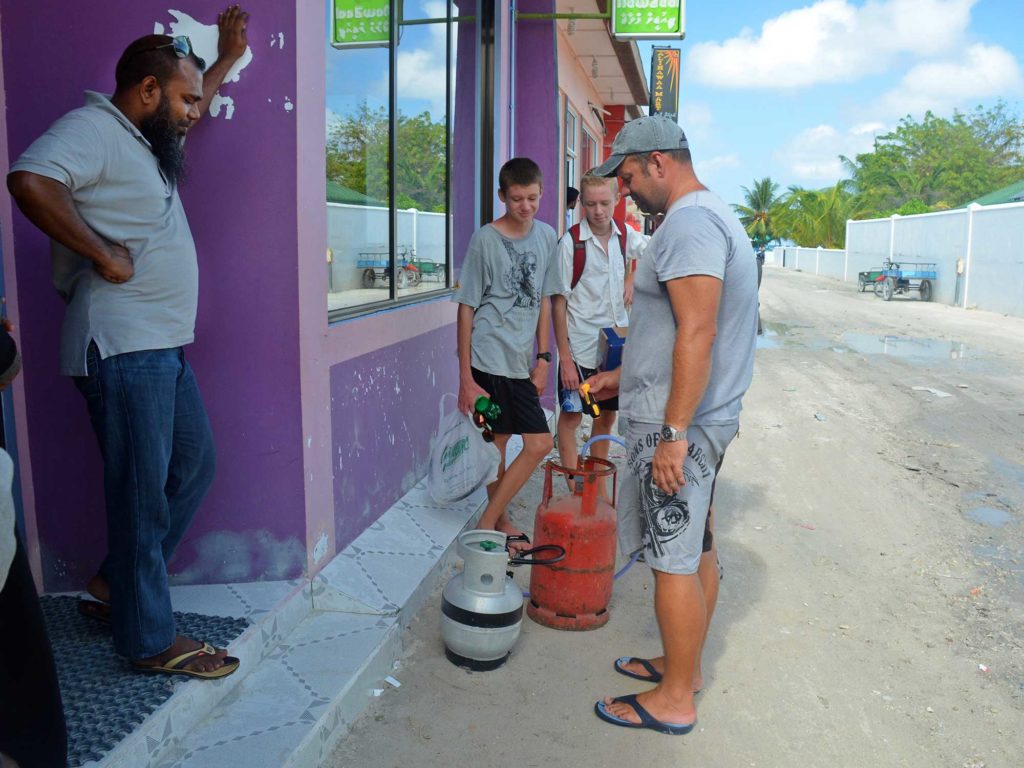
Cost of propane
In a typical year, we spend between $150-$200 on propane.
Because propane is widely used for cooking fuel, it’s not just readily available – it’s also relatively affordable. Our cheapest fill was in Mexico recently: about US$9 for the 22 lb tank that we used more than two months. The most expensive was in Bali, where our smaller (then 20 lb) tank cost $50 to fill (due to a pricey service provider; the local market rate was a fraction of this). Australia was also very high at nearly $50 per tank. In French territories, they use butane or a propane/butane mix. Fortunately, our stove/oven works fine with both fuels; and we prefer butane as it burns much hotter than propane.
How much we use
Our long-term average use is just under a half pound of propane per day.
In 2016, our aluminum tanks had some pitting so we replaced with two 10 kg (22 lb) fiberglass tanks. Each last around 45 days. Calculating consumption is slightly fuzzy math, because not all fills are equal (the perfect top-up isn’t guaranteed) and everyday usage can fluctuate quite a lot. Habits do, too; in cooler weather the oven gets more use. Sometimes the oven is literally a heat source and provides an incentive for roasting or baking! We’ve tracked this for so many years, the curves are smoothed.
Managing use
The tank we just emptied went 65 days, or, about a third of a pound per day. That’s about 30% less than our norm, and not because we were eating off the boat. Thanks to COVID, we haven’t had a shoreside taco since March! Baja summer weather is the factor: we are using our solar ovens more, since they do a great job of cooking without heating up the galley. We are hardly baking at all; the oven hasn’t been used since Totem had birthday season in May. And we’re skewing towards meals that use less stove time (like couscous instead of rice: a few minutes to boil a kettle for couscous, vs. much longer to cook a pot of rice).
Sometimes, keeping propane use down has been a deliberate choice based on the uncertainty of the next fill. Leaving Australia, we knew it could be difficult or impossible to get propane along our outer-island route in Papua New Guinea. From there we’d cross into eastern Indonesia, which we’d also heard was complicated based on incompatible fittings. In addition to filling tanks just before departure from Bundaberg, we lowered our everyday use by using the solar oven more and choice of meals—picking those that needed less cooking time.
Other ways to lower propane use include stovetop ovens, like the Omnia, or pressure cookers. We make active use of our pressure cooker to this end; see our favorite in Totem’s galley essentials list, or read about our love of solar cooking.
Safety
Propane is among the most volatile items onboard, and needs careful management.
- Tanks: metal tanks should be in good conditions—watch for rust or corrosion.
- Hoses: Propane is under high pressure! A regulator reduces this to about 2 psi. Give a routine inspection for corrosion and wear to the regulator, fittings, hose, and clamps.
- Storage: because of the volatile nature of propane, the locker where tanks are stored should be isolated from interior of the boat and vent overboard. Propane is heavier than air, so any interior leaks sink to the bilge—a potentially explosive situation.
- Use: all installations should rely on a solenoid switch, with the propane flow off unless it’s in active use. Bonus: you save power! A solenoid uses about one amp.
- Smell: the rotten-egg smell of propane smell of rotten eggs is distinctive for a reason! If you suspect a leak, test by mixing up very sudsy water and laying bubbles over component parts. Even a small leak will show by making bubbles move around. An electronic “sniffer” and alarm system are further peace of mind
Can you cut out propane?
Some boats are switching from propane to electric-powered cooktops or ovens, whether they are induction or radiant (coils). The reasons vary, but include the goal of all green-power generation, or greater self-sufficiency by eliminating a fuel from the provisioning lists. Alcohol stoves were popular decades ago, but today aren’t even the minority option—they’re the rare outlier.
Those are laudable ideals, but it’s a tough fit. Induction and radiant stoves require a lot of electricity. One “burner” can pull 120 to 150 amps of 12volt DC power. This requires a lot of usable battery capacity, supporting charge system, a big inverter, and a whole lot of solar capacity to remain “green.” Cats have the benefit of more real-estate for solar capacity. Or it can be run directly from AC power generator, if you don’t mind turning the generator on every time you want to cook. Some boats are AC-centric and not as much burden to do so, but it does get back to burning dinosaurs to make coffee.
For all but boats with the real estate and budget for a substantial green-power generation setup, propane remains the practical choice.
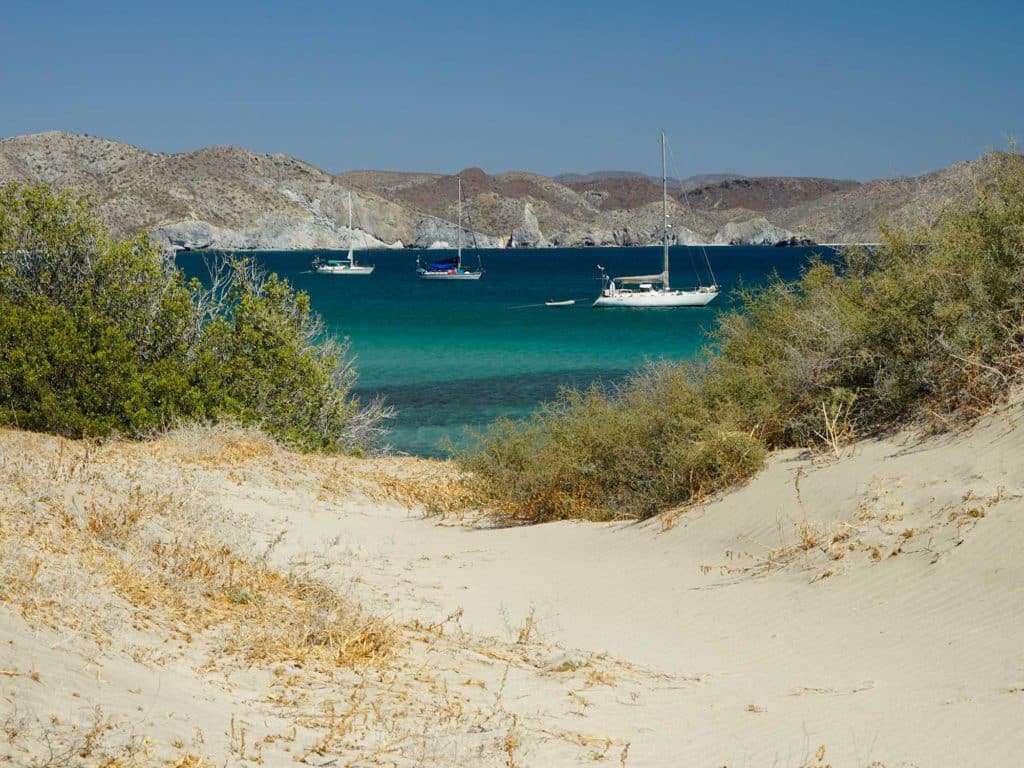
Seminars and speaking engagements
Wooden Boat Festival. We’re excited to join the Wooden Boat Festival’s virtual event, live on September 12 (with seminars accessible to participants for a month)!
Cruisers University at the Annapolis Boat Show. Cruisers University runs from October 5th-8th; Jamie and I plan to teach a virtual program. Details TBA; for the latest from the US Sailboat Show in Annapolis, visit the show website.
Women’s Sailing Seminar. I’m thrilled to keynote this event during the weekend of November 14-15, 2020. In their 28th year, WSS organizers are transitioning their two-day program online with an eye on the camaraderie that defined their gathering the pre-COVID world. Details coming soon!

